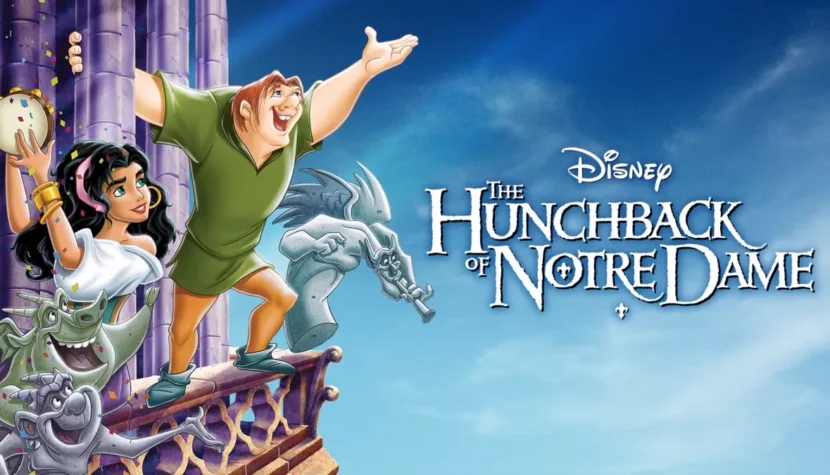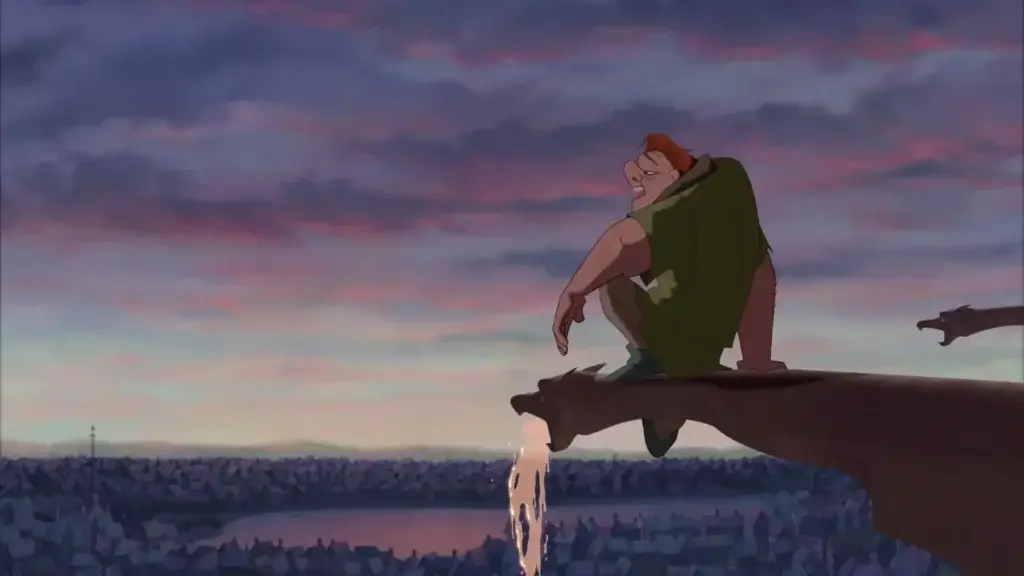THE HUNCHBACK OF NOTRE DAME. Different perspectives on freedom

The beginning of “The Hunchback of Notre Dame” is one of the most majestic openings in the studio’s entire repertoire. We soar through thick clouds, gazing from a great height at a map of 15th-century Paris. As we draw closer to the famous cathedral, we hear the powerful ringing of bells. Nearly the entire animation unfolds within its walls or on the nearby square. In Kirk Wise and Gary Trousdale’s directorial vision, Notre Dame is the heart of the city, not only its most iconic symbol but also its center of social, spiritual, and cultural life. This solemn atmosphere is set by Clopin’s song, lending weight to the entire story. This is to be a tale of a monster and a man, and it’s up to the viewer to decide which characters fill those roles.
Of course, this task is not too difficult. Although the conflict between Quasimodo and Judge Claude Frollo leaves little room for doubt, the creators manage to imbue it with the proper emotional depth, primarily built around the guilt and shame consuming Frollo. Frollo killed Quasimodo’s mother, and the boy’s life was saved only by the intervention of the cathedral’s archdeacon, who granted asylum to the gypsy infant. Frollo can’t defy the clergyman and likely, for the only time in his life, sees and understands the extent of the evil he is capable of. This is a defining moment for him. The shock is heightened by his view of Quasimodo’s deformed body. However, the judge is too weak to change, to reject the principles that have always guided his life. His character and phobias will only intensify.

Frollo is an excellently crafted character—a villain of the kind cinema needs. He’s terrifying but not entirely devoid of a deeply buried conscience. He must loathe himself, but he compensates with the power and dominance he wields over others. Perhaps the greatest paradox (and one rendered incredibly believably) is that he desires the gypsy Esmeralda, who belongs to the very ethnic group Frollo tries so hard to expel from Paris. Frollo also shares a father-son relationship with Quasimodo (also a gypsy), albeit one that is corrupt and false. Yet it fills an emotional void in his life. Frollo is ensnared by what he despises yet simultaneously craves. Every time I watch this film, I find his character intriguing and thought-provoking. The narrative ultimately brands him a monster, clearly. Yet in some sense, he is also a victim—a victim who set the trap for himself.
In “The Hunchback of Notre Dame”, interesting contradictions emerge beyond just Frollo’s character. The world depicted in the film is propelled by various paradoxes, large and small. The Feast of Fools, which seems like the perfect opportunity for Quasimodo’s first venture outside the cathedral walls, only heightens his insecurities and distrust of the outside world. The crowd shows no sensitivity, and during the festival, Quasimodo becomes the object of ridicule. Another example is the cathedral itself, which is both a sanctuary and a prison for the protagonist. These two views of Quasimodo’s home are constantly juxtaposed, as when Esmeralda takes refuge there to escape Frollo’s pursuit. Quasimodo welcomes her, but she is equally quick to want to leave Notre Dame. “The Hunchback of Notre Dame” explores different perspectives on freedom, on how it can be defined and understood.

The filmmakers make the most of the complex relationships between Frollo, Esmeralda, and Quasimodo. The only potentially controversial character might be Captain Phoebus. His transformation and resistance to the judge’s methods have entirely understandable foundations. However, he doesn’t fulfill his role as an ally and eventually Esmeralda’s partner effectively. It feels as though he was included in the story so that the gypsy would have an alternative to the hunchback who also loves her. At the end, Quasimodo joins the hands of his new friends but also accepts that he is destined to always remain on the sidelines.
In this respect, “The Hunchback of Notre Dame” stumbles slightly. It loses some consistency. Certain boundaries couldn’t be crossed—Quasimodo, a hero with a heart of gold but a deformed, unattractive appearance, has no chance with an attractive Disney “princess.” She will always choose the ideal knight.
“The Hunchback of Notre Dame” offers a flawlessly executed psychological conflict and charismatic, captivating characters. Quasimodo and Frollo are compelling dramatic figures, with clear motivations, hidden fears, phobias, and ambitions.
The film is also especially timely, particularly today as we repeatedly return to discussions about refugees. The cultural, social, and political theme of “self versus the other” is perhaps the most significant lens through which to view “The Hunchback of Notre Dame”. Disney’s animation provides the tools to take a meaningful stance in this discussion, which may indeed be its greatest value.

